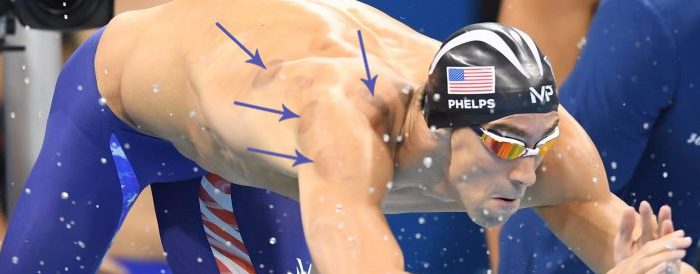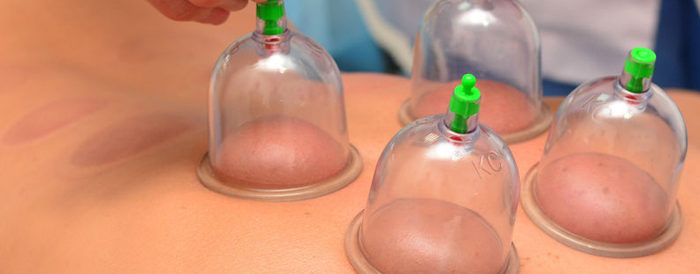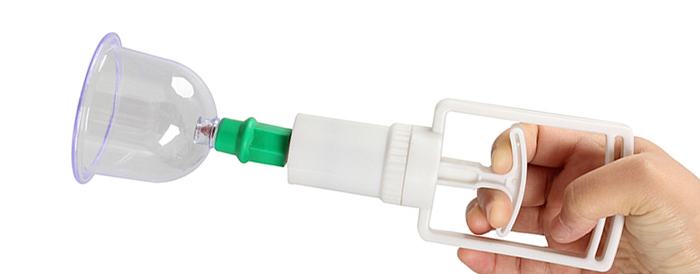
Cupping Therapy…Fact or Fiction


If you watched swimming during the Rio Olympics you undoubtedly saw at least one of Michael Phelps races and noticed the purple dots. Given Phelps walked away with 5 golds and a silver those purple dots have created quite a buzz. Can these seemingly magical dots make all of us swim like an Olympian or at a very minimum heal us from our aches and pains? Well, the truth is, no one can say for certain what role those dots play in the healing/recovery process since there isn’t a lot of scientific evidence to support the practice. The practice, by the way is called cupping. And magical or not, given the number of wins under Phelps belt in Rio 2016, it would seem as though the dots have helped in some way.
Cupping therapy is a form of alternative medicine that dates back many centuries and can be linked not only to Asian and European practice but also to Egyptian and ancient Greek as well. There are two types of cupping: dry and wet with multiple variations of each type. The basic principle for all types involves the creation of suction, by placing a special cup (varying types depending technique) on the skin to create focused suction in the targeted area. The cup remains in place for several minutes (ranging from 3 – 15mins depending on the practice) while the vacuum creates pressure drawing blood to the region…hence the purple bruising.

Given its association with such a high profile and successful athlete, cupping will definitely become a treatment option many people will want to explore. However, like any other treatment method, it’s important to understand what you’re getting into.
Regardless of the type of cupping, the therapy method is rooted in the creation of suction. Traditionally, the treatment approach involved using something flammable like alcohol, cloth or paper to create a flame which would then be inserted into the cup to create heat. The flame would then be removed and in a quick fluid motion, the cup would be placed on the patient’s skin. The result, a vacuum would be created as the air inside the cup cools causing the suctioning effect. A more modern and common approach amongst practitioners in the Western world is to use a pump to create the suction. In either case, the suctioning leads to the rising and reddening of the skin as blood flow increases to the area, swelling the blood vessels leading to the skin bruising (i.e. circular marks).

Wet cupping derives its name from the fact that a small amount of bleeding is induced during the process. After the initial placement of the cup to create the suction, it is removed and then very tiny incisions (using a scalpel) are made to the suctioned area. The cup is then placed back onto the same area to induce more suctioning to draw out blood. The reasoning is that this process removes harmful toxins from the area which help support healing.
There’s no medical evidence to support the “drawing out toxins theory”, nor is there much evidence to support the dry treatment approach either. Scientific proof is a bit tricky because it’s difficult to run accurate tests using a control group – creating a placebo effect for suction is not so easy. Basically, you’re either getting suctioned or you’re not…there’s no fooling.
There are cupping advocates that insist that the procedure is undoubtedly useful whether or not scientific proof can be offered. Professionals within the field of medicine will tell you that a patient’s participation is required both physically and psychologically in any healing process. The mind can play a strong role in speeding up recovery so if a patient mentally feels they are getting better their healing process will be faster. So if cupping makes a patient feel better whether slight or significant – then that effect is very real. And likewise, if a world-class athlete believes it helps it becomes an advantage. We all know that at an Olympic level the athletes are all physically well-tuned and capable of winning. Winners are often separated from the rest by their mental capability versus their physical.
Proof or no proof, this type of therapy is very much in practice. And given it has been in use for over 3,000 years it would be a little arrogant of Western medicine to discount its effectiveness just because the practice is not properly understood by western measure. There are also those that say cupping is a risky treatment. In response, it’s important to note is that no treatment is without risk if it’s not delivered by a trained and experienced professional. If you are interested in seeking out cupping as a treatment for your condition, you would be well advised to find an experienced practitioner. You can start by speaking with someone trained in Traditional Chinese Medicine registered with the College of Traditional Chinese Medicine practitioners and Acupuncturists of Ontario (CTCMPAO).
Comments are closed.

